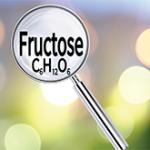Gout is an inflammatory arthritis triggered by the crystallization of monosodium urate monohydrate inside the joints. It’s preceded by hyperuricemia. Gout flares lead to substantial morbidity by causing severe pain, reduced quality of life, decreased physical function, increased healthcare costs, and economic productivity loss. Further, gout is strongly associated with metabolic syndrome and may contribute to myocardial infarction, type 2 diabetes mellitus, chronic kidney disease and premature mortality. The prevalence of gout and hyperuricemia in the U.S. more than doubled between the 1960s and the 1990s and continued to increase steadily until at least 2007–08, according to the National Health and Nutrition Examination Survey (NHANES).
Using 2007–2016 data from NHANES, a nationally representative survey of American men and women, Chen-Xu et al. set out to estimate the current prevalence rates and decadal trends of gout and hyperuricemia in the U.S., as well as the prevalence of urate-lowering therapy (the receipt of allopurinol, febuxostat or probenecid, either alone or in combination) among gout patients.
Methods: Using data from 5,467 participants in the NHANES 2015–16, the researchers estimated the most recent prevalence rates of gout and hyperuricemia. When the NHANES was conducted, all participants were asked about their history of gout (as diagnosed by a health professional) and medication use. Hyperuricemia was defined as having a serum urate level of >7.0 mg/dL in men and >5.7 mg/dL in women. The researchers examined decadal trends in these estimates using data from the NHANES 2007–16 and investigated urate-lowering therapy usage trends using the NHANES 2007–14 (the most recent data available to date).
Results: In 2015–16, the prevalence of gout was 3.9% among adults in the U.S. (9.2 million people), with 5.2% [5.9 million] in men and 2.7% [3.3 million] in women. Mean serum urate levels were 6.0 mg/dL in men and 4.8 mg/dL in women, and hyperuricemia prevalence rates were 20.2% and 20.0%, respectively. The prevalence of gout increased with age, with the lowest gout prevalence (0.7% or 0.6 million) in individuals ages 20–39 years and the highest (8.7% or 1.0 million) in individuals age 80 years or older. The prevalence of gout among Medicare-eligible individuals (age 65 years or older) was 8.6%, which corresponds to an estimated 4.0 million U.S. adults with gout. The prevalence rates of gout and hyperuricemia remained stable between 2007 and 2016 (P for trend >0.05). The prevalence of urate-lowering therapy use among patients with gout was 33% in 2007–14 and remained stable over time (P for trend >0.05).

